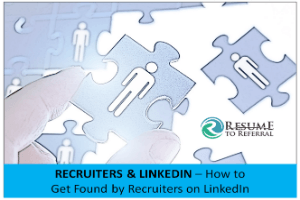According to a Jobvite survey of 1,000+ recruiters, 92% stated they use social media to recruit and hire.
The social network of choice?
 LinkedIn. No surprise there.
LinkedIn. No surprise there.
The clear heavyweight, LinkedIn ranks #1 amongst 87% of recruiters who leverage LinkedIn’s talent acquisition tools to source, engage, and vet top talent.
Some of the top recruitment benefits of LinkedIn include:
- Passive Candidate Search
- Candidate Communications
- Applicant Tracking
- Pre-Employment Screening
- Interview Scheduling
- Relationship Management
Hiring companies are using LinkedIn as part of their recruitment marketing plan, which introduces potential candidates to the company culture, job opportunities, and employer brand.
LinkedIn also provides job candidates with job postings, job alerts, estimated salary information, an “inside look” into employers, applicants’ rank for jobs, and messaging capabilities, which makes for a feature-rich experience.
The recruitment process hasn’t been smooth, however.
LinkedIn came under fire in 2015 for potential violations of the Fair Credit Reporting Act (FCRA).
The plaintiffs filed suit against LinkedIn, stating they provided hiring companies the ability to contact former colleagues and bosses who could provide insight into potential new hires.
The court ruled in favor of LinkedIn.
[CLICK HERE to Follow Us On LinkedIn]
Has LinkedIn Replaced Online Boards?
Remember the 87% I referenced above?
The same study showed that 37% of recruiters are still using sites like Monster, TheLadders, and ZipRecruiter, which conflicts with LinkedIn’s Global Recruiting Survey findings.
The previous year’s survey stated that hiring personnel still see these boards as prime recruitment tools. The survey claims, “The reports of the death of job boards have clearly been greatly exaggerated.”
I disagree … and here’s why.
A Unanimous Decline in Traffic
After taking a peek at the popularity of top job-posting sites @Alexa.com, a downward trend is very noticeable.
Traffic levels for many have shown drops in traffic rankings:




Despite showing the expected drop during the holidays (e.g., November and December), I noticed traffic continued to decline through January and into the beginning of February.
LinkedIn is a Workhorse For Recruiters
LinkedIn has become many things to recruiters.
This is how recruiters are using LinkedIn:
- Job Board
- Communications Platform
- Applicant Tracking System
- Recruiting Platform
- Searchable Database
- Modern-Day Rolodex
- Research Tool
Go Where Recruitment Agencies Are
It makes sense to go where recruiters are looking for job seekers, right?
If you are serious about your job search, you need to be on LinkedIn.
The first step is to set up a few saved job searches on LinkedIn to receive regular updates on matching vacancies.
You can even apply for those job openings on the platform.
Next, perfect your profile by using a professional headshot – don’t underestimate how important this is!
You need a LinkedIn profile that supports your job-search activities. With today’s hiring landscape, you can’t exclude LinkedIn from your efforts.
More Tips on How to Find Online Employment Using Your LinkedIn Page
To learn more about how best to leverage your LinkedIn profile, here are articles to help:
- How to Improve Your LinkedIn Headline [with 10+ Examples]
- Job Seekers: Get Hired Faster Doing These 9 Things on LinkedIn Every Day
- In-Depth Guide – How to Optimize Your Complete LinkedIn Profile
Don’t forget to add your bio information, including location, industry, and professional title.
Many recruiters search candidates using a zip code, so if you live in one place but are job searching in another, use that zip code as your current location.
Crafting a concise but thorough summary on LinkedIn is important, just as it is the executive summary on your resume.
As you list your work experience, consider adding portfolio items (e.g., something you’ve published, a video of a speech you made, or a creative piece) from your time in that job.
Also, ask colleagues, supervisors, or clients to write e a recommendation, directly through LinkedIn, to optimize this area of your profile. Remember to use skill- and function-specific keywords that will help you get found, as recruiters search by them in all areas.
As you input your skills in LinkedIn, experts recommend that you use those that LinkedIn recommends to you.
Researching Recruiters on LinkedIn
LinkedIn goes both ways.
Recruiters and hiring managers find out more about you, but you also gain advantages by learning more about them.
Once a recruiter has contacted you, spend some time looking over the company’s LinkedIn URL, and check out all the relevant players’ LinkedIn profiles – the person who is interviewing you, your potential boss and colleagues, and the organization’s leadership team.
It would help if you didn’t do this in “private mode” either.
Many employers like to see that you are doing your homework as you prepare for an interview.
Also, find out by searching through your LinkedIn contacts if you have any first- or second-degree connections who work at an organization you’re interested in.
They might be able to refer you, which is an excellent way to get on a recruiter’s radar.
How to Find Recruiters on Linked?
There are three primary ways to find recruiters using LinkedIn.
First, use the power of Google Search. Copy, paste, and adjust the following search string in the Google search bar:
sales recruiter site:linkedin.com/in/ OR site:linkedin.com/pub/
Second, use LinkedIn’s search bar to find recruiters, recruitment companies, and groups.
One Last Thing
Although LinkedIn is the largest, it’s not the only place where recruiters hang out.
Many also check Facebook profiles (56%) and Twitter pages (47%) to find out more about candidates.
The point is that recruiters are everywhere online.
Always imagine they can see the information you put out there publicly and put your best professional face forward.